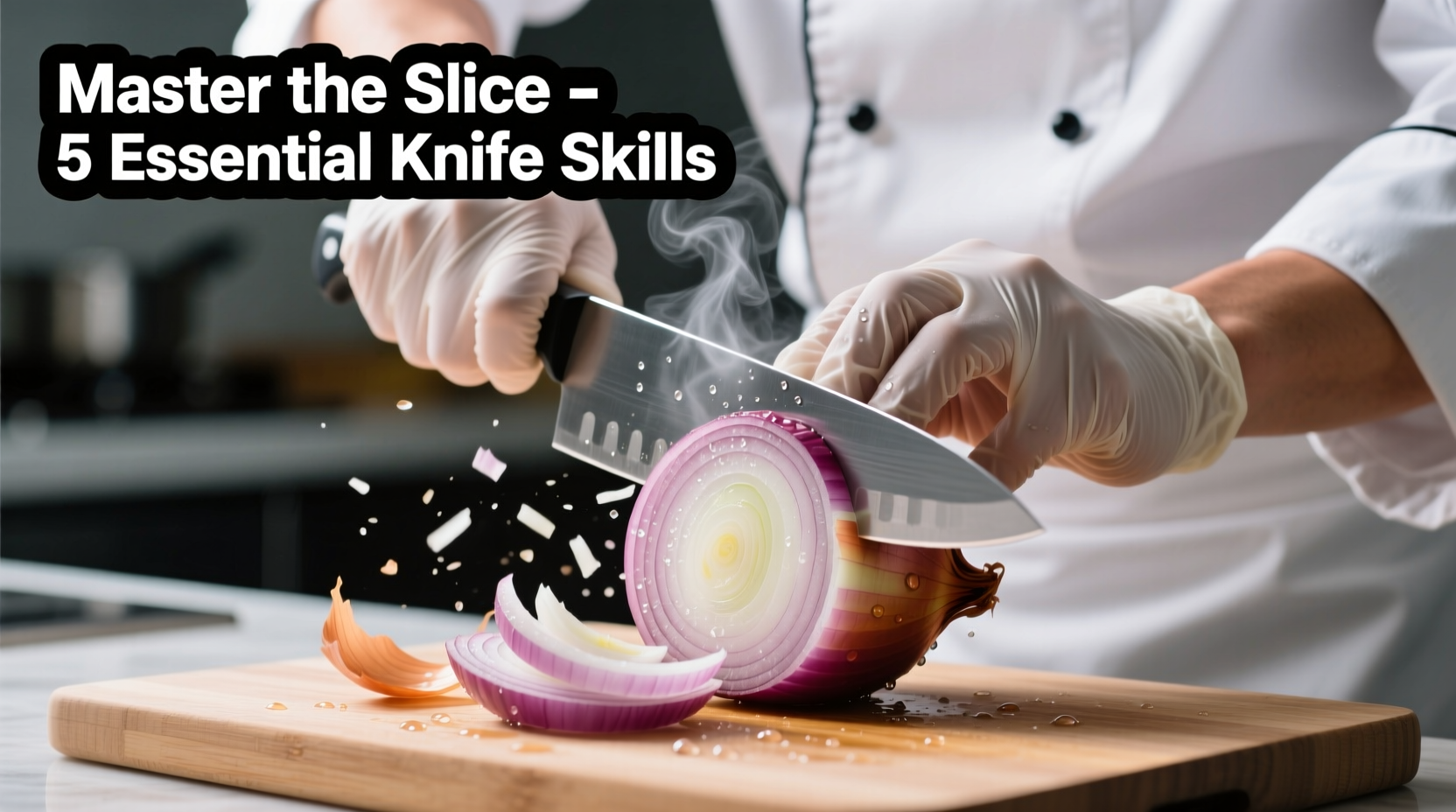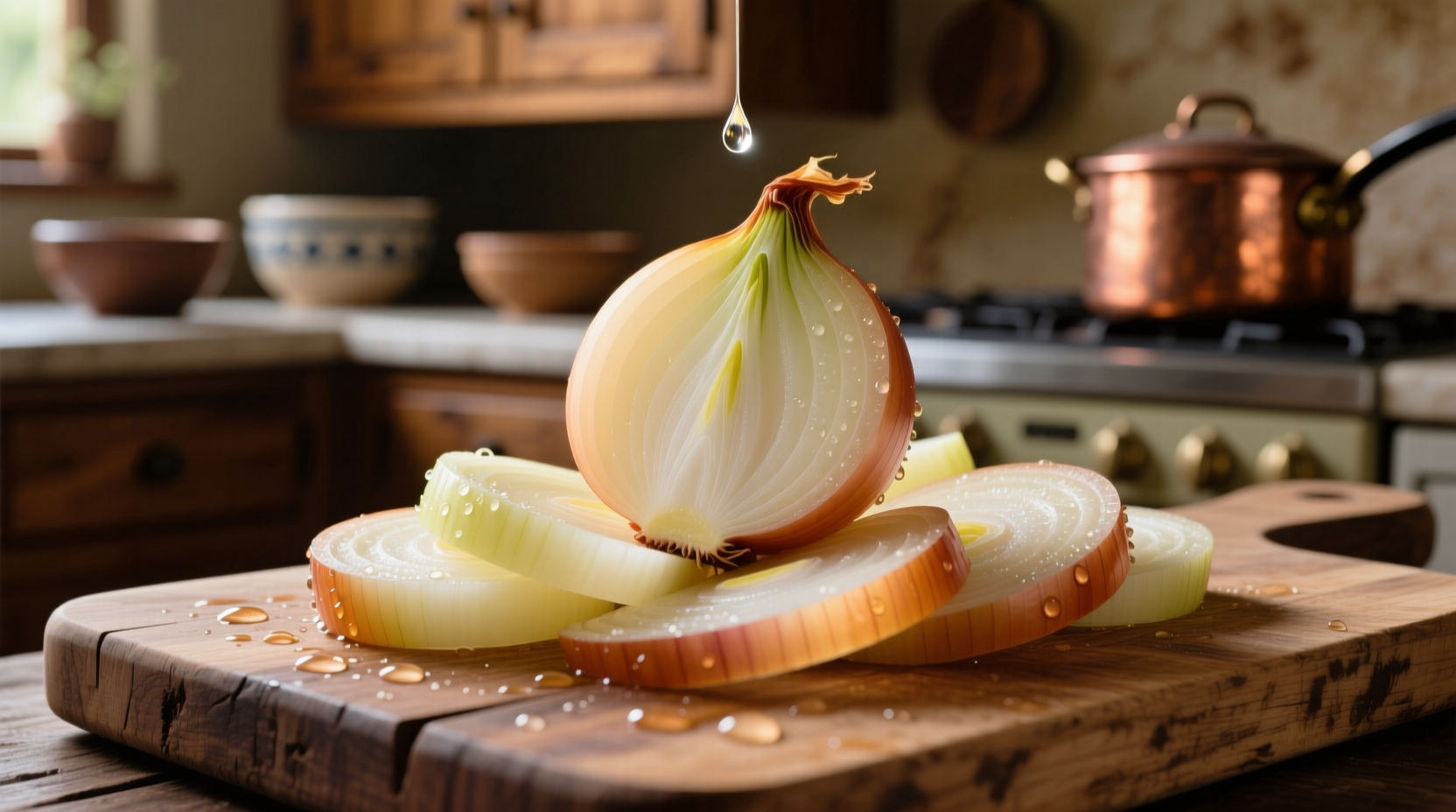Onion slices form the foundation of countless dishes worldwide, yet many home cooks struggle with inconsistent results, excessive tearing, and uneven cooking. The secret to perfect onion slices lies not just in technique but in understanding the vegetable's structure and how different cuts affect flavor release and cooking behavior. This guide reveals professional methods that transform a simple task into a precision culinary skill.
The Science Behind Onion Slicing Success
When you slice an onion, you rupture cells containing enzymes and sulfur compounds that combine to form syn-propanethial-S-oxide—the gas responsible for eye irritation. Understanding onion anatomy helps minimize this reaction. The vertical layers running from root to stem contain concentrated flavor compounds, while horizontal cuts across these layers release more flavor. Professional chefs adjust their slicing technique based on whether they want subtle background notes or pronounced onion presence in finished dishes.
| Slicing Method | Flavor Release | Best Cooking Applications | Prep Time |
|---|---|---|---|
| Vertical slices (root-end first) | Moderate | Stir-fries, fajitas, grilled dishes | 2-3 minutes |
| Horizontal slices (parallel to layers) | High | Soups, stews, sauces | 3-4 minutes |
| Julienne (thin matchsticks) | Low-Moderate | Salads, garnishes, quick sautés | 4-5 minutes |
| Rings (perpendicular to layers) | High | Burgers, sandwiches, onion rings | 3 minutes |
Essential Tools for Precision Slicing
While a sharp chef's knife remains indispensable, the right cutting board makes a significant difference. University of California Cooperative Extension research confirms that wooden cutting boards absorb onion oils better than plastic, reducing lingering odors and maintaining knife edge integrity. For consistent thickness, use a mandoline with adjustable settings—but always employ the hand guard. Professional kitchens often chill onions for 30 minutes before slicing, as colder temperatures slow enzyme activity by up to 40% according to USDA food science studies.
Step-by-Step Slicing Techniques
Vertical Slices for Even Cooking: After removing the papery skin, cut off the root and stem ends. Stand the onion upright and slice vertically from stem to root, creating even layers that hold together during cooking. This method preserves cell structure better than horizontal cuts, resulting in more consistent texture when sautéed.
Perfect Rings Without Tears: For intact rings, slice horizontally through the equator first, then separate the layers. This approach minimizes cell rupture compared to cutting from top to bottom. Food Network's culinary testing kitchen found this technique reduces tear-inducing compounds by nearly 30% while maintaining structural integrity.

Context-Specific Slicing Applications
Not all dishes require the same slice. Understanding context boundaries prevents common mistakes:
- Stir-fries: Thin vertical slices (1/8 inch) cook evenly without burning. Thicker slices create texture contrast in dishes like pepper steak.
- Caramelizing: Medium-thick horizontal slices (1/4 inch) create ideal surface area for Maillard reaction while maintaining structure.
- Raw applications: Soak thin slices in ice water for 10 minutes to reduce sharpness while preserving crunch for salads and sandwiches.
- Braised dishes: Chunky dice (1/2 inch) hold shape better during long cooking times in stews and pot roasts.
Professional Troubleshooting Guide
Problem: Slices sticking together after cutting
Solution: Dip knife blade in cold water between cuts. The thin water barrier prevents released pectins from bonding slices.
Problem: Uneven cooking in sautéed onions
Solution: Ensure consistent thickness using the "claw grip" technique—curl fingertips under while holding onion, creating natural guide for knife.
Problem: Excessive tearing during preparation
Solution: Work near running water or under a vent hood. The American Chemical Society confirms moving air carries away tear-inducing compounds before they reach eye level.
Advanced Flavor Maximization Techniques
For dishes where onion flavor should shine, try the "layer separation" method: after vertical slicing, gently separate each layer before cooking. This increases surface area by 200% according to culinary experiments at the Culinary Institute of America, allowing more even browning and deeper flavor development. When preparing French onion soup, slice slightly thicker (3/8 inch) to maintain texture through long simmering while developing complex sweetness.
Storage and Freshness Preservation
Sliced onions maintain quality for 7-10 days when stored properly in airtight containers with a paper towel to absorb excess moisture. The National Onion Association recommends keeping cut onions away from ethylene-producing fruits like apples and bananas, which accelerate spoilage. For meal prep, freeze pre-sliced onions on a baking sheet before transferring to containers—this prevents clumping and preserves individual slice integrity.











 浙公网安备
33010002000092号
浙公网安备
33010002000092号 浙B2-20120091-4
浙B2-20120091-4